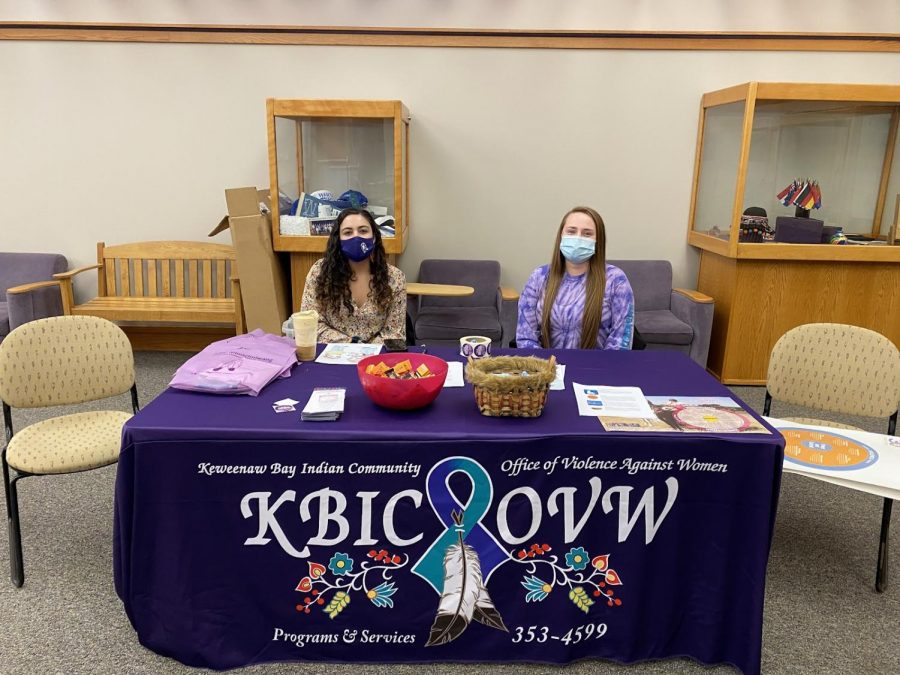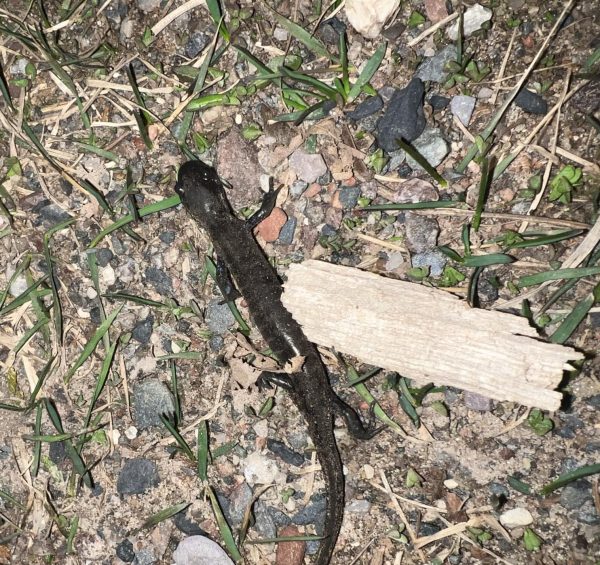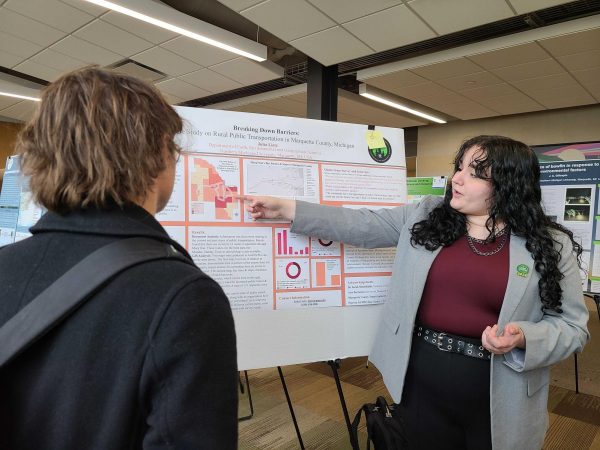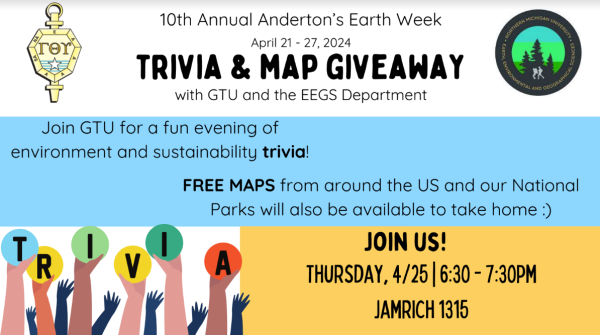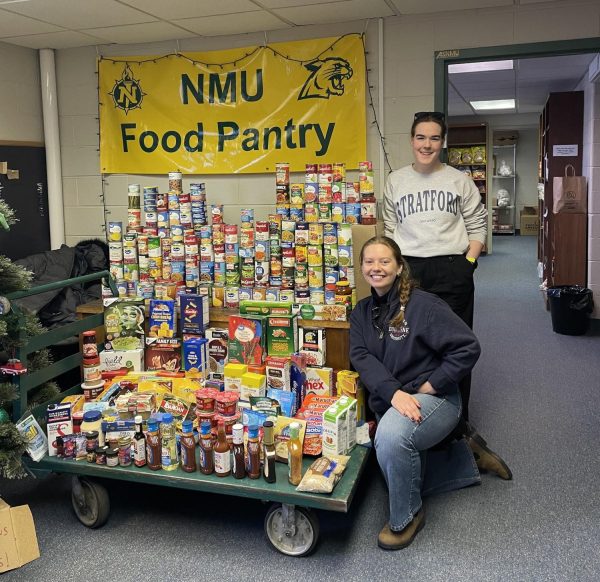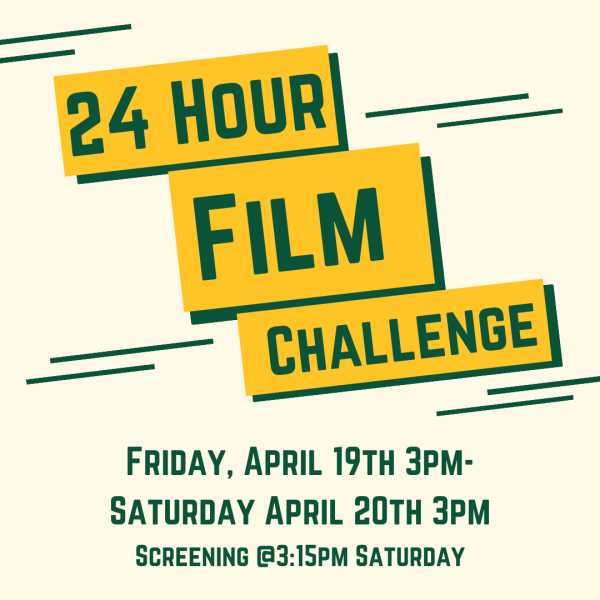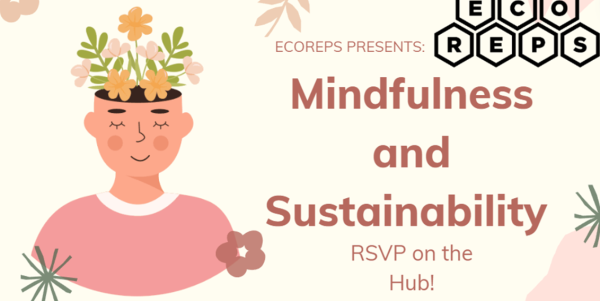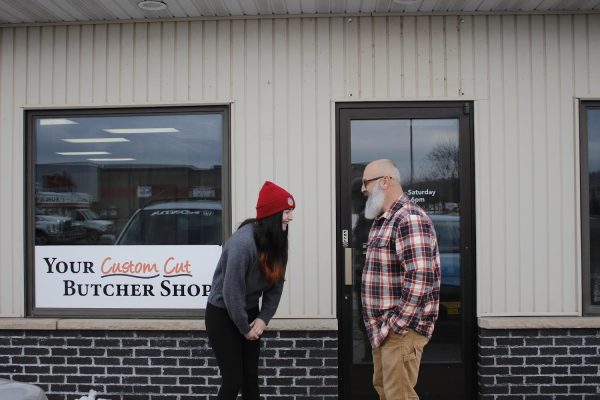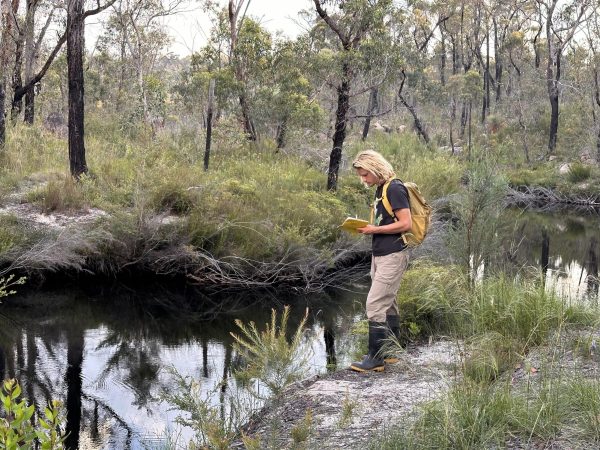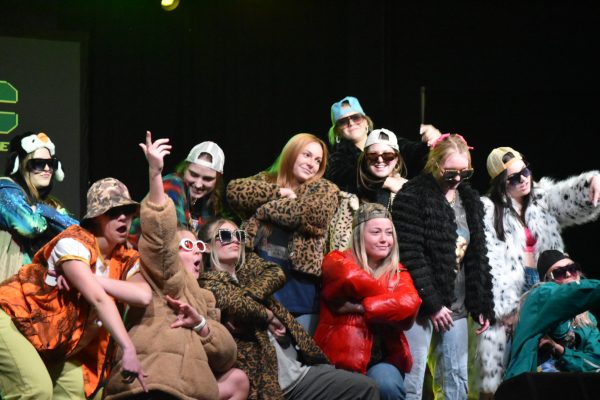Walking the Path Together hosts workshop focused on healing from domestic violence
Photo courtesy of Sierra Ayres
Carisa LaFernier and Ginger Shelifoe from the Keweenaw Bay Indian Community answer questions about victim services or about domestic violence awareness in the Indigenous community. Other resources at the Domestic Violence Awareness and Wellness Workshop included a storytelling workshop and yoga.
December 1, 2021
When attendees walked into Whitman Hall on Nov. 15, they found a group sitting at a table, immersed by the words of a woman who found healing in forgiveness. Scattered across the table were books, a copper cup of water and colored medicine wheels and she animatedly described each of the tools in front of her.
That woman is Vicki Dowd, a member of the Women’s Advisory Council for Hannahville’s Victim Services program and was a speaker at the Domestic Violence Awareness and Wellness Workshop.
Mino-bimse’idiwag, or Walking the Path Together, a program within the social work department and Center for Native American Studies which focuses on advancing the education in Native American Studies and working with victims of crime within Indigenous communities, hosted the worksop in honor of Domestic Violence Awareness Month in October and Native American Heritage Month in November. The workshop was made up of three different sessions: storytelling and creativity, education and resources and yoga.
Dowd led the storytelling and creativity session and shared stories about healing, physically and spiritually, through the Native way of life.
“In my teachings, I need to tell people that it’s okay to move on with our lives,” said Dowd. “Leave him [the abuser] back there or leave that behind you and move forward.”
Dowd found her way to recovery after her own experience with domestic violence by beading. Beading is a cultural tradition, a “Native thing,” said Dowd. Her homemade beaded necklace around her neck tells a story. The necklace honors the missing Indigenous people.
“I believe beading is the map of creation, the map of who we are,” said Dowd. “It took me 10 years to realize who I was, and I don’t want any more of it. I want to be a better person.”
Advocates from the Keweenaw Bay Indian Community ran the education and resources portion of the workshop. Carisa Lafernier and Ginger Shelifoe sat at a table ready to answer questions about victim services or about domestic violence awareness. Students were able to spin a wheel to question what they would do in certain situations. The wheel gives examples of red flags or situations that people may not have realized were abusive.
“There are people like me out here who want to help you either if it’s to escape a situation, or just to talk about it to normalize it,” said Shelifoe, who graduated from NMU in 2018.
The third session was yoga focused on meditation as a way of healing, said Sierra Ayres, the program director of Walking the Path Together. It was put on by community member Brialle Ringer.
“She’s a really amazing wellness practitioner that focuses on issues of trauma and racial justice,” said Ayres.
Walking the Path Together put on the event to bring creative ways for students to talk about the issue of domestic violence in a way that it can be perpetuated in their own lives and relationships, said Ayres.
“Oftentimes, we don’t know that domestic violence is happening,” said Ayres. “And we don’t know how to address it.”
NMU doesn’t currently have any specific resources for domestic violence or intimate partner violence or sexual assault, but Walking the Path Together wanted students to know that there are different resources and supports available for them on campus and in the community, said Ayres.
“I think that if we can bring light to these issues, and provide space for people to come, we can hopefully create more space for safety and healing in the future,” said Ayres.





















